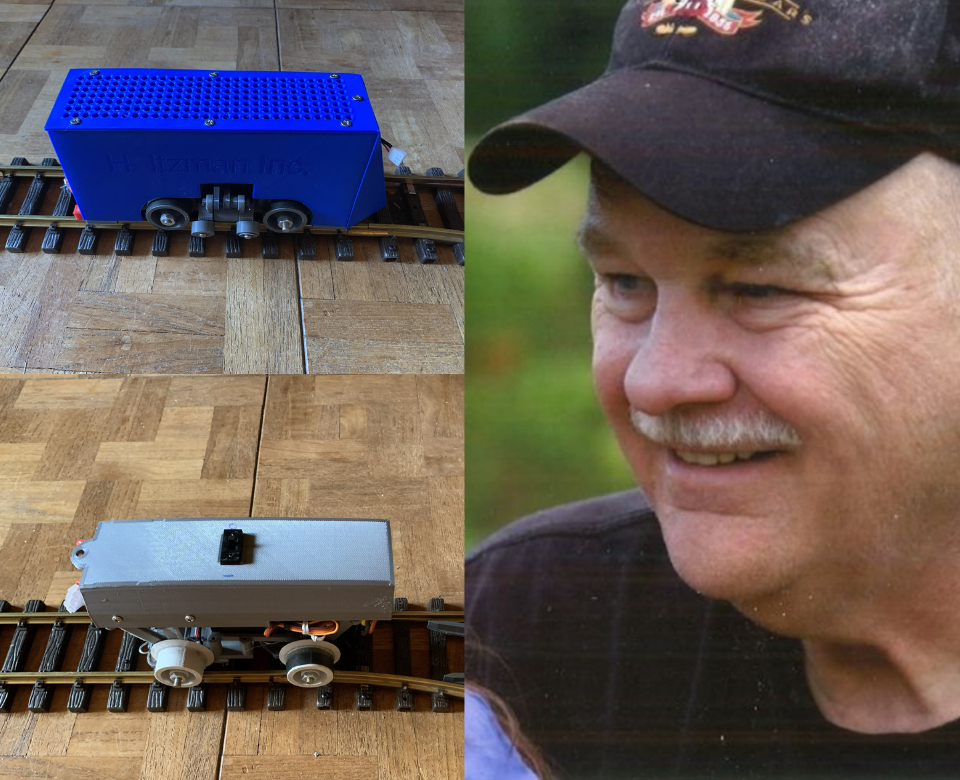A Longmont engineer recently invented a new design for rail vehicles that have self-steering capabilities.
In rail networks around the world, train cars use switches, which guide the cars from one track to another. Tom Williams’ invention doesn’t require moving switches — his newly-patented model rail cars can navigate their own paths on a track network, making them more like cars and trucks.
“The invention is designed to move people and material around when burning fossil fuels is no longer allowed because of global warming,” Williams explained.
Implementing a system of rails and self-steering rail vehicles would require far less energy than cars and trucks, the engineer said.
“Moving people and stuff around takes energy — a key characteristic of rail is lower rolling resistance that is multiple times better than tires on roads,” he explained. “So convenient rail travel is a conservation play.”
Williams also noted that rails are cheaper than roads to build and maintain. Rails can also conduct electricity.
“Rail cars can run on renewables, which can also charge the batteries in rail vehicles for travel over passive rails,” he said.
The self-driving rail cars would free up people’s time during commuting, so they could work while in transit.
“The safety of self-driving rail cars should be much better than on roads with human drivers,” he explained.
Williams has employed an unusual marketing strategy for his invention — he’s created toy cars that were presented for the first time at a model train show in Denver on April 1.
The engineer’s company, Holtzman Inc., is currently working to make the public, regulators and investors aware of the invention, and the toy models are designed to demonstrate its potential.
“Our business model is to get 3D printer folks to make and sell the model rail cars,” Williams explained.
He aims to have the model train cars available for purchase before Christmas this year.
With more than 80 patents under his belt, Williams is no stranger to innovation. After receiving his bachelor’s degree in Electrical Engineering from Christian Brothers University and his master’s degree in Electrical Engineering from the University of Illinois, he earned a Master’s in Business Administration from Eastern Illinois University. He’s spent more than five decades working as an engineer in the communications industry, and incorporated Holtzman, Inc. in 1998 as an innovation digital transmission company. With the growing concern over the impacts of climate change, Williams decided to shift his company’s focus to transportations solutions.
"Climate change is the challenge of our generation,” he said. “We can choose to meet it, or we can retreat into our shells and suffer the consequences.”



